Best Electric Vans to Buy in 2024
In recent years, the automotive industry has witnessed a significant shift towards sustainable and eco-friendly transportation solutions. As we step into the year 2024, the market for electric vehicles, including electric vans, continues to expand. For those considering making the switch to electric mobility, it’s essential to stay informed about the best electric van models available in 2024.
Don’t let hidden issues or past accidents ruin your van-buying experience. Our VIN lookup tool provides you with valuable information, so you can confidently select the best electric vans for you. Find the best options on the market and drive away with confidence using our handy VIN check service!
This article will provide an overview of the top electric vans, their key features, technological advancements, innovative designs, and a comparison with conventional diesel vans to help you make an informed decision.
Cost: Electric vans are typically more expensive to purchase upfront than diesel vans. However, electric vans have lower operational and maintenance costs, as electricity is generally cheaper than diesel fuel and electric vehicles have fewer moving parts that require maintenance.
Environmental impact: Electric vans produce zero tailpipe emissions, making them a more environmentally friendly option than diesel vans, which emit harmful pollutants into the air. In addition, electric vans contribute to lower overall carbon emissions if the electricity used to charge them comes from renewable sources. You can know a car’s environmental impact via EPA ratings.
Performance: Electric vans have instant torque, providing smooth and responsive acceleration, while diesel vans may have a delay in power delivery. Electric vans also tend to be quieter and offer a smoother driving experience compared to diesel vans.
Efficiency: Electric vans are more energy-efficient than diesel vans, as they can convert a higher percentage of their energy into actual work. This translates to lower fuel costs and longer driving ranges for electric vans.
Range: Electric vans typically have a shorter range on a single charge compared to the range of diesel vans on a full tank of fuel. However, as battery technology continues to advance, the range of electric vans is steadily increasing.
In general, electric vans offer a cleaner, more efficient, and increasingly cost-effective alternative to diesel vans, especially as the infrastructure for charging electric vehicles continues to expand. However, the charging infrastructure for electric vehicles is not as developed as the refueling infrastructure for diesel vehicles, and some industries and applications may still require the longer range and easier refueling of diesel vans.
First, they are more environmentally friendly than traditional vans that run on gasoline or diesel. By using electricity as a power source, electric vans can help reduce greenhouse gas emissions and air pollution, contributing to a cleaner and healthier environment.
Second, electric vans can also help save on fuel costs and taxes. Electricity is generally cheaper than gasoline or diesel and is sometimes incentivized by states, so using electric vans can result in lower operating costs for businesses or individuals using them for transportation.
Third, electric vans are often quieter and produce less vibration than traditional vans, which can lead to a more comfortable driving experience for the driver and passengers.
In short, electric vans can provide a more sustainable and cost-effective option for transportation needs, while also contributing to efforts to reduce emissions and combat climate change.
Regenerative braking: Electric vans often feature regenerative braking, which recaptures kinetic energy during braking and converts it into electricity to recharge the vehicle’s battery. This technology helps to extend the van’s driving range and enhances energy efficiency.
Advanced battery technology: Electric vans use advanced lithium-ion batteries that offer high energy density, faster charging times and longer lifespan. These batteries are also designed to withstand heavy usage and provide reliable performance in various weather conditions.
Connectivity and data analytics: Electric vans often come equipped with advanced connectivity features and data analytics capabilities. This allows fleet managers to monitor and optimize the performance of the vans in real-time, leading to improved efficiency and reduced operating costs.
Customizable cargo space: Electric vans can be designed with customizable cargo space thanks to their compact drivetrain. This allows for flexible storage options and efficient use of interior space, making them ideal for a wide range of commercial and delivery applications.
Advanced driver assistance systems: Many electric vans incorporate advanced driver assistance systems, such as collision avoidance, lane departure warning, and adaptive cruise control. These features improve safety and reduce the risk of accidents, making electric vans a preferred choice for commercial fleet operators.
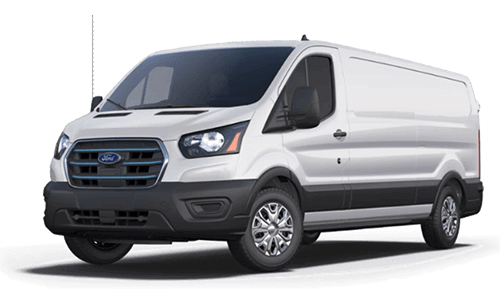 The 2023 Ford e-Transit is not only adaptable and practical, but also comfortable, well-equipped, and enjoyable to spend time in when compared to other light commercial vehicles. Our experience is largely based on teenage Transit diesels, but the Ford Pro scheme takes care of everything from purchase to financing, charging hub set-up, software integration, live telematics, and other necessary tasks. It starts to make sense to consider electric vehicles, specifically for shorter range and multi-drop carriers. If the numbers add up, then the e-Transit is currently the top choice.
The 2023 Ford e-Transit is not only adaptable and practical, but also comfortable, well-equipped, and enjoyable to spend time in when compared to other light commercial vehicles. Our experience is largely based on teenage Transit diesels, but the Ford Pro scheme takes care of everything from purchase to financing, charging hub set-up, software integration, live telematics, and other necessary tasks. It starts to make sense to consider electric vehicles, specifically for shorter range and multi-drop carriers. If the numbers add up, then the e-Transit is currently the top choice.
 If you are looking for a well-priced example of leading electric van technology, the 2023 Proace City is the place to start. The Proace City comes in L1 and L2 body lengths, both with a single roof height and cargo volumes of 3.3 and 3.9 cubic meters, respectively, with a payload of up to one tonne. Toyota has opted for the PSA-sourced 1.5-litre diesel in 75hp and 100hp. The Icon trim level includes features such as an 8-inch touchscreen with Apple CarPlay and Android Auto, a rear camera, and extra storage.
If you are looking for a well-priced example of leading electric van technology, the 2023 Proace City is the place to start. The Proace City comes in L1 and L2 body lengths, both with a single roof height and cargo volumes of 3.3 and 3.9 cubic meters, respectively, with a payload of up to one tonne. Toyota has opted for the PSA-sourced 1.5-litre diesel in 75hp and 100hp. The Icon trim level includes features such as an 8-inch touchscreen with Apple CarPlay and Android Auto, a rear camera, and extra storage.
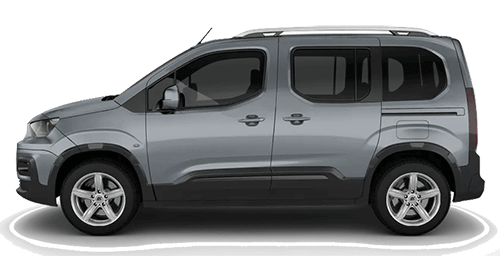 The 2024 Peugeot e-Rifter meets our criteria with a reasonable price, an acceptable driving range, and a non-van-like appearance. Although the long wheelbase layout may not be as ideal, the e-Rifter is still maneuverable with light steering and large windows. Its 10.8-meter turning circle and big glass areas provide good visibility, even in the longer XL model. The iCockpit concept gives the e-Rifter a stylish layout for a family MPV, featuring a small but funky leather steering wheel and a well-shaped instrument panel with a 10.0-inch driver’s display on the top-spec. All e-Rifter versions are equipped with a 50kWh battery pack, providing a range of 172 miles on a full charge.
The 2024 Peugeot e-Rifter meets our criteria with a reasonable price, an acceptable driving range, and a non-van-like appearance. Although the long wheelbase layout may not be as ideal, the e-Rifter is still maneuverable with light steering and large windows. Its 10.8-meter turning circle and big glass areas provide good visibility, even in the longer XL model. The iCockpit concept gives the e-Rifter a stylish layout for a family MPV, featuring a small but funky leather steering wheel and a well-shaped instrument panel with a 10.0-inch driver’s display on the top-spec. All e-Rifter versions are equipped with a 50kWh battery pack, providing a range of 172 miles on a full charge.
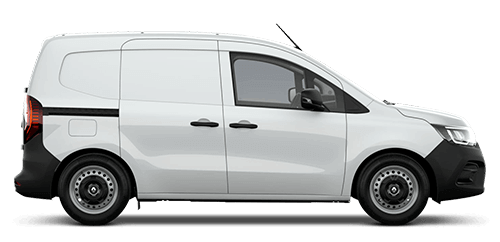 The French company, Renault, has released the second generation of its small electric van, the 2023 Kangoo E-Tech. This comes at a time when many other van manufacturers are only just releasing their first electric vans. The original Renault Kangoo Z.E. was introduced in 2012, and in 2023, the E-Tech has arrived as an improved small electric commercial vehicle. The E-Tech features a 45kWh lithium-ion battery and a 90kW (121hp) motor that provides 245Nm of torque. This setup allows for a range of up to 186 miles and a 0-62mph time of 11.6 seconds. With 181lb ft of torque, the vehicle accelerates smoothly and has a top speed of 81mph. Despite the weight of the battery pack, the Kangoo E-Tech handles well, with direct and well-weighted steering. Its ride quality effectively dampens larger bumps and road imperfections.
The French company, Renault, has released the second generation of its small electric van, the 2023 Kangoo E-Tech. This comes at a time when many other van manufacturers are only just releasing their first electric vans. The original Renault Kangoo Z.E. was introduced in 2012, and in 2023, the E-Tech has arrived as an improved small electric commercial vehicle. The E-Tech features a 45kWh lithium-ion battery and a 90kW (121hp) motor that provides 245Nm of torque. This setup allows for a range of up to 186 miles and a 0-62mph time of 11.6 seconds. With 181lb ft of torque, the vehicle accelerates smoothly and has a top speed of 81mph. Despite the weight of the battery pack, the Kangoo E-Tech handles well, with direct and well-weighted steering. Its ride quality effectively dampens larger bumps and road imperfections.
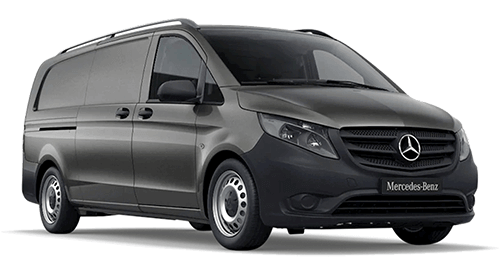 The 2023 Mercedes-Benz eVito also features regenerative braking, which can help to recharge the batteries while on the move and extend the van’s range. It has a claimed range of up to 93 miles on a single charge, making it suitable for urban delivery and short-haul transportation. Inside, the eVito is largely similar to the standard Vito, with a well-built and comfortable cabin with plenty of storage space. However, the load area is slightly compromised by the battery packs, reducing the maximum load volume by around 100 liters compared to the diesel version. Overall, the Mercedes-Benz eVito is a solid first step into the electric van market, offering a good balance of range, performance, and practicality for urban delivery and short-haul transportation. As the technology continues to improve, electric vans like the eVito are likely to become an increasingly popular option for businesses looking to reduce their environmental impact.
The 2023 Mercedes-Benz eVito also features regenerative braking, which can help to recharge the batteries while on the move and extend the van’s range. It has a claimed range of up to 93 miles on a single charge, making it suitable for urban delivery and short-haul transportation. Inside, the eVito is largely similar to the standard Vito, with a well-built and comfortable cabin with plenty of storage space. However, the load area is slightly compromised by the battery packs, reducing the maximum load volume by around 100 liters compared to the diesel version. Overall, the Mercedes-Benz eVito is a solid first step into the electric van market, offering a good balance of range, performance, and practicality for urban delivery and short-haul transportation. As the technology continues to improve, electric vans like the eVito are likely to become an increasingly popular option for businesses looking to reduce their environmental impact.
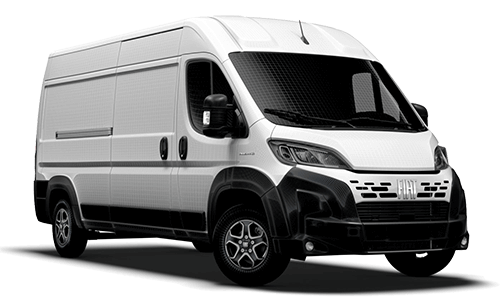 The range of the 2023 Fiat e-Ducato will vary depending on the battery pack chosen and the type of driving, but Fiat claims a maximum range of up to 230 miles on a single charge with the larger battery pack. Charging times will also vary, with a full charge taking around 2 hours and 25 minutes with a 22kW fast charger for the 47kWh unit and around 4 hours and 30 minutes for the 79kWh unit. Inside, the e-Ducato offers a practical and functional cabin with a range of technology and connectivity options, including a 7-inch touchscreen infotainment system with Apple CarPlay and Android Auto. There’s also a range of safety features available, such as autonomous emergency braking, lane departure warning, and a rear-view camera. On balance, the e-Ducato offers a viable electric option for those in need of a practical and versatile commercial vehicle. With its range of body styles and battery options, it can cater to a wide range of business needs, and its electric powertrain provides low running costs and zero emissions – making it an attractive option for urban delivery and logistics operations.
The range of the 2023 Fiat e-Ducato will vary depending on the battery pack chosen and the type of driving, but Fiat claims a maximum range of up to 230 miles on a single charge with the larger battery pack. Charging times will also vary, with a full charge taking around 2 hours and 25 minutes with a 22kW fast charger for the 47kWh unit and around 4 hours and 30 minutes for the 79kWh unit. Inside, the e-Ducato offers a practical and functional cabin with a range of technology and connectivity options, including a 7-inch touchscreen infotainment system with Apple CarPlay and Android Auto. There’s also a range of safety features available, such as autonomous emergency braking, lane departure warning, and a rear-view camera. On balance, the e-Ducato offers a viable electric option for those in need of a practical and versatile commercial vehicle. With its range of body styles and battery options, it can cater to a wide range of business needs, and its electric powertrain provides low running costs and zero emissions – making it an attractive option for urban delivery and logistics operations.
Don’t let hidden issues or past accidents ruin your van-buying experience. Our VIN lookup tool provides you with valuable information, so you can confidently select the best electric vans for you. Find the best options on the market and drive away with confidence using our handy VIN check service!
This article will provide an overview of the top electric vans, their key features, technological advancements, innovative designs, and a comparison with conventional diesel vans to help you make an informed decision.
What are Electric Vans?
Electric vans are vehicles that are powered by an electric motor rather than a traditional gasoline or diesel engine. These vans typically have a battery pack that stores electricity which powers the motor to propel the vehicle. They are designed to be more environmentally friendly and cost-effective than traditional vans with internal combustion engines. Electric vans are gaining popularity as businesses and individuals look for more sustainable transportation options. They are especially well-suited for urban delivery and transport services, as well as for businesses looking to reduce their carbon footprint.How Do Electric Vans Compare to Diesel Vans?
Electric vans and diesel vans differ in several key areas, including cost, environmental impact, performance, and overall efficiency.Cost: Electric vans are typically more expensive to purchase upfront than diesel vans. However, electric vans have lower operational and maintenance costs, as electricity is generally cheaper than diesel fuel and electric vehicles have fewer moving parts that require maintenance.
Environmental impact: Electric vans produce zero tailpipe emissions, making them a more environmentally friendly option than diesel vans, which emit harmful pollutants into the air. In addition, electric vans contribute to lower overall carbon emissions if the electricity used to charge them comes from renewable sources. You can know a car’s environmental impact via EPA ratings.
Performance: Electric vans have instant torque, providing smooth and responsive acceleration, while diesel vans may have a delay in power delivery. Electric vans also tend to be quieter and offer a smoother driving experience compared to diesel vans.
Efficiency: Electric vans are more energy-efficient than diesel vans, as they can convert a higher percentage of their energy into actual work. This translates to lower fuel costs and longer driving ranges for electric vans.
Range: Electric vans typically have a shorter range on a single charge compared to the range of diesel vans on a full tank of fuel. However, as battery technology continues to advance, the range of electric vans is steadily increasing.
In general, electric vans offer a cleaner, more efficient, and increasingly cost-effective alternative to diesel vans, especially as the infrastructure for charging electric vehicles continues to expand. However, the charging infrastructure for electric vehicles is not as developed as the refueling infrastructure for diesel vehicles, and some industries and applications may still require the longer range and easier refueling of diesel vans.
How Electric Vans Can Help You
Electric vans can help in several ways.First, they are more environmentally friendly than traditional vans that run on gasoline or diesel. By using electricity as a power source, electric vans can help reduce greenhouse gas emissions and air pollution, contributing to a cleaner and healthier environment.
Second, electric vans can also help save on fuel costs and taxes. Electricity is generally cheaper than gasoline or diesel and is sometimes incentivized by states, so using electric vans can result in lower operating costs for businesses or individuals using them for transportation.
Third, electric vans are often quieter and produce less vibration than traditional vans, which can lead to a more comfortable driving experience for the driver and passengers.
In short, electric vans can provide a more sustainable and cost-effective option for transportation needs, while also contributing to efforts to reduce emissions and combat climate change.
What are the Most Innovative Features of Electric Vans?
Electric drivetrain: One of the most innovative features of electric vans is the use of an electric drivetrain instead of a traditional internal combustion engine. This not only reduces emissions but also provides a smooth, quiet and efficient driving experience.Regenerative braking: Electric vans often feature regenerative braking, which recaptures kinetic energy during braking and converts it into electricity to recharge the vehicle’s battery. This technology helps to extend the van’s driving range and enhances energy efficiency.
Advanced battery technology: Electric vans use advanced lithium-ion batteries that offer high energy density, faster charging times and longer lifespan. These batteries are also designed to withstand heavy usage and provide reliable performance in various weather conditions.
Connectivity and data analytics: Electric vans often come equipped with advanced connectivity features and data analytics capabilities. This allows fleet managers to monitor and optimize the performance of the vans in real-time, leading to improved efficiency and reduced operating costs.
Customizable cargo space: Electric vans can be designed with customizable cargo space thanks to their compact drivetrain. This allows for flexible storage options and efficient use of interior space, making them ideal for a wide range of commercial and delivery applications.
Advanced driver assistance systems: Many electric vans incorporate advanced driver assistance systems, such as collision avoidance, lane departure warning, and adaptive cruise control. These features improve safety and reduce the risk of accidents, making electric vans a preferred choice for commercial fleet operators.
What are the Best Electric Vans Available in 2024?
2023 Ford e-Transit
 The 2023 Ford e-Transit is not only adaptable and practical, but also comfortable, well-equipped, and enjoyable to spend time in when compared to other light commercial vehicles. Our experience is largely based on teenage Transit diesels, but the Ford Pro scheme takes care of everything from purchase to financing, charging hub set-up, software integration, live telematics, and other necessary tasks. It starts to make sense to consider electric vehicles, specifically for shorter range and multi-drop carriers. If the numbers add up, then the e-Transit is currently the top choice.
The 2023 Ford e-Transit is not only adaptable and practical, but also comfortable, well-equipped, and enjoyable to spend time in when compared to other light commercial vehicles. Our experience is largely based on teenage Transit diesels, but the Ford Pro scheme takes care of everything from purchase to financing, charging hub set-up, software integration, live telematics, and other necessary tasks. It starts to make sense to consider electric vehicles, specifically for shorter range and multi-drop carriers. If the numbers add up, then the e-Transit is currently the top choice.
2023 Toyota Proace City Electric
 If you are looking for a well-priced example of leading electric van technology, the 2023 Proace City is the place to start. The Proace City comes in L1 and L2 body lengths, both with a single roof height and cargo volumes of 3.3 and 3.9 cubic meters, respectively, with a payload of up to one tonne. Toyota has opted for the PSA-sourced 1.5-litre diesel in 75hp and 100hp. The Icon trim level includes features such as an 8-inch touchscreen with Apple CarPlay and Android Auto, a rear camera, and extra storage.
If you are looking for a well-priced example of leading electric van technology, the 2023 Proace City is the place to start. The Proace City comes in L1 and L2 body lengths, both with a single roof height and cargo volumes of 3.3 and 3.9 cubic meters, respectively, with a payload of up to one tonne. Toyota has opted for the PSA-sourced 1.5-litre diesel in 75hp and 100hp. The Icon trim level includes features such as an 8-inch touchscreen with Apple CarPlay and Android Auto, a rear camera, and extra storage.
2024 Peugeot e-Rifter
 The 2024 Peugeot e-Rifter meets our criteria with a reasonable price, an acceptable driving range, and a non-van-like appearance. Although the long wheelbase layout may not be as ideal, the e-Rifter is still maneuverable with light steering and large windows. Its 10.8-meter turning circle and big glass areas provide good visibility, even in the longer XL model. The iCockpit concept gives the e-Rifter a stylish layout for a family MPV, featuring a small but funky leather steering wheel and a well-shaped instrument panel with a 10.0-inch driver’s display on the top-spec. All e-Rifter versions are equipped with a 50kWh battery pack, providing a range of 172 miles on a full charge.
The 2024 Peugeot e-Rifter meets our criteria with a reasonable price, an acceptable driving range, and a non-van-like appearance. Although the long wheelbase layout may not be as ideal, the e-Rifter is still maneuverable with light steering and large windows. Its 10.8-meter turning circle and big glass areas provide good visibility, even in the longer XL model. The iCockpit concept gives the e-Rifter a stylish layout for a family MPV, featuring a small but funky leather steering wheel and a well-shaped instrument panel with a 10.0-inch driver’s display on the top-spec. All e-Rifter versions are equipped with a 50kWh battery pack, providing a range of 172 miles on a full charge.
2023 Renault Kangoo E-Tech
 The French company, Renault, has released the second generation of its small electric van, the 2023 Kangoo E-Tech. This comes at a time when many other van manufacturers are only just releasing their first electric vans. The original Renault Kangoo Z.E. was introduced in 2012, and in 2023, the E-Tech has arrived as an improved small electric commercial vehicle. The E-Tech features a 45kWh lithium-ion battery and a 90kW (121hp) motor that provides 245Nm of torque. This setup allows for a range of up to 186 miles and a 0-62mph time of 11.6 seconds. With 181lb ft of torque, the vehicle accelerates smoothly and has a top speed of 81mph. Despite the weight of the battery pack, the Kangoo E-Tech handles well, with direct and well-weighted steering. Its ride quality effectively dampens larger bumps and road imperfections.
The French company, Renault, has released the second generation of its small electric van, the 2023 Kangoo E-Tech. This comes at a time when many other van manufacturers are only just releasing their first electric vans. The original Renault Kangoo Z.E. was introduced in 2012, and in 2023, the E-Tech has arrived as an improved small electric commercial vehicle. The E-Tech features a 45kWh lithium-ion battery and a 90kW (121hp) motor that provides 245Nm of torque. This setup allows for a range of up to 186 miles and a 0-62mph time of 11.6 seconds. With 181lb ft of torque, the vehicle accelerates smoothly and has a top speed of 81mph. Despite the weight of the battery pack, the Kangoo E-Tech handles well, with direct and well-weighted steering. Its ride quality effectively dampens larger bumps and road imperfections.
2023 Mercedes-Benz eVito
 The 2023 Mercedes-Benz eVito also features regenerative braking, which can help to recharge the batteries while on the move and extend the van’s range. It has a claimed range of up to 93 miles on a single charge, making it suitable for urban delivery and short-haul transportation. Inside, the eVito is largely similar to the standard Vito, with a well-built and comfortable cabin with plenty of storage space. However, the load area is slightly compromised by the battery packs, reducing the maximum load volume by around 100 liters compared to the diesel version. Overall, the Mercedes-Benz eVito is a solid first step into the electric van market, offering a good balance of range, performance, and practicality for urban delivery and short-haul transportation. As the technology continues to improve, electric vans like the eVito are likely to become an increasingly popular option for businesses looking to reduce their environmental impact.
The 2023 Mercedes-Benz eVito also features regenerative braking, which can help to recharge the batteries while on the move and extend the van’s range. It has a claimed range of up to 93 miles on a single charge, making it suitable for urban delivery and short-haul transportation. Inside, the eVito is largely similar to the standard Vito, with a well-built and comfortable cabin with plenty of storage space. However, the load area is slightly compromised by the battery packs, reducing the maximum load volume by around 100 liters compared to the diesel version. Overall, the Mercedes-Benz eVito is a solid first step into the electric van market, offering a good balance of range, performance, and practicality for urban delivery and short-haul transportation. As the technology continues to improve, electric vans like the eVito are likely to become an increasingly popular option for businesses looking to reduce their environmental impact.
Fiat E-Ducato
 The range of the 2023 Fiat e-Ducato will vary depending on the battery pack chosen and the type of driving, but Fiat claims a maximum range of up to 230 miles on a single charge with the larger battery pack. Charging times will also vary, with a full charge taking around 2 hours and 25 minutes with a 22kW fast charger for the 47kWh unit and around 4 hours and 30 minutes for the 79kWh unit. Inside, the e-Ducato offers a practical and functional cabin with a range of technology and connectivity options, including a 7-inch touchscreen infotainment system with Apple CarPlay and Android Auto. There’s also a range of safety features available, such as autonomous emergency braking, lane departure warning, and a rear-view camera. On balance, the e-Ducato offers a viable electric option for those in need of a practical and versatile commercial vehicle. With its range of body styles and battery options, it can cater to a wide range of business needs, and its electric powertrain provides low running costs and zero emissions – making it an attractive option for urban delivery and logistics operations.
The range of the 2023 Fiat e-Ducato will vary depending on the battery pack chosen and the type of driving, but Fiat claims a maximum range of up to 230 miles on a single charge with the larger battery pack. Charging times will also vary, with a full charge taking around 2 hours and 25 minutes with a 22kW fast charger for the 47kWh unit and around 4 hours and 30 minutes for the 79kWh unit. Inside, the e-Ducato offers a practical and functional cabin with a range of technology and connectivity options, including a 7-inch touchscreen infotainment system with Apple CarPlay and Android Auto. There’s also a range of safety features available, such as autonomous emergency braking, lane departure warning, and a rear-view camera. On balance, the e-Ducato offers a viable electric option for those in need of a practical and versatile commercial vehicle. With its range of body styles and battery options, it can cater to a wide range of business needs, and its electric powertrain provides low running costs and zero emissions – making it an attractive option for urban delivery and logistics operations.